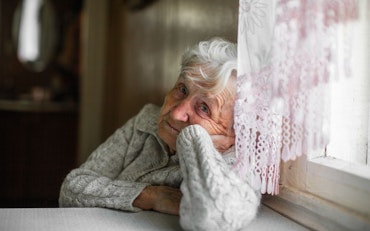Monkeypox: A new pandemic to worry about?
Monkeypox (MPX) has been declared a Communicable Disease Incident of National Significance in Australia after the World Health Organisation (WHO) declared it a public health emergency of international concern in July.
![<p>Monkeypox (MPX) has been declared a Communicable Disease Incident of National Significance in Australia. [Source: iStock]</p>](https://agedcareguide-assets.imgix.net/news/articles/6_9_22-MonkeyPox.jpg?fm=pjpg&format=auto&w=550&q=65)
Monkeypox (MPX) has been declared a Communicable Disease Incident of National Significance in Australia. [Source: iStock]
While the research is limited, researchers suggest older patients with comorbidities could suffer from severe symptoms if they contract MPX.
As of September 1, 2022, there are 124 cases of MPX in Australia, this includes 64 cases in Victoria, 48 in New South Wales, five in Western Australia, three in Queensland, two in the Australian Capital Territory, and two in South Australia.
Just months after the country took a quick breath after COVID-19 measures and restrictions eased, in late July Australia’s Chief Medical Officer Professor Paul Kelly declared the MPX situation a Communicable Disease Incident of National Significance.
MPX is a nationally notifiable disease for the next six months. During that time, a review will determine whether to list the virus permanently.
MPX illness is usually mild and people typically recover within a few weeks and expert medical groups have developed MPX treatment and vaccine guidelines.
There are signs, symptoms and preventative measures the general public and older Australians should be aware of.
But where did MPX come from and how can it affect you?
Monkeypox explained
MPX is not a new disease. It was first identified in humans in 1970 in the Democratic Republic of the Congo in Africa.
MPX is a viral zoonotic disease, an infectious disease that has jumped from a non-human animal to humans through direct contact or through food, water or the environment. These diseases have historically occurred mostly in tropical rainforest areas of Central and West Africa which has since spread to other regions.
MPX is similar to smallpox. It is a rare viral illness that can become serious but for most people, symptoms will clear up on their own after two to four weeks.
In May 2022, MPX was first reported in Australia after multiple cases were identified in several non-endemic countries.
Is it dangerous for older people?
The biggest threat of the emerging MPX outbreak is to elderly patients with comorbidities.
A greater prevalence in people, especially among the immunosuppressed and older people, may afford more opportunities for the virus to mutate, often resulting in becoming infected and suffering severe symptoms.
But older people who have had smallpox or had received a smallpox vaccination before they ceased administering them in the 1980s are better protected.
As MPX comes from the same virus family as smallpox, it has been suggested that antibodies from having smallpox or receiving a smallpox vaccine could reduce the likelihood of developing severe MPX symptoms.
Limited research currently available on MPX means researchers are unable to draw hard conclusions about the nature of the virus and how it affects different demographics.
Signs and symptoms
MPX Symptoms can begin after as little as five days up to 21 days after exposure.
Symptoms can include:
- A distinctive rash or lesions (bumps that turn into pimples, blisters or sores, and may burst to form ulcers or scabs)
- Swollen lymph nodes
- Fever
- Headache
- Muscle aches
- Joint pain
- Back pain
- Chills
- Exhaustion
The rash often changes and goes through different stages before forming a scab and falling off. It can appear as lesions which typically begin on the face that look similar to chickenpox, but larger. They can vary in size and number with as little as a single lesion to several thousand.
The rash can also develop in the mouth and spread to other parts of the body including the hands, feet, and chest. Some people have reported a rash appearing in the genital and perianal regions without spreading to other areas of the body.
Some people may only experience this rash with no other symptoms, but other people have had anorectal pain with no other symptoms. The rash can be painful, especially if the lesions join together or appear in the mouth or rectum.
A person with MPX is thought to be infectious from the time they develop any symptoms until all scabs have healed and a fresh layer of skin has formed, which may take several weeks.
You should seek immediate medical advice if you develop any of these symptoms after returning from overseas or being in contact with a case.
Transmission
The transmission of MPX between people can occur through:
- Close contact with rashes, blisters or sores on the skin
- Body fluids such as respiratory droplets from coughing or sneezing
- Contaminated objects such as linen and towels
Transmission through respiratory droplets is less common and usually only happens if there is prolonged face-to-face contact.
Although the virus is not a sexually transmitted infection (STI), transmission can occur through intimate physical contact during sex. In this case, it is likely that infectious skin rashes, blisters or sores are the mode of transmission.
Treatment and prevention
Most people require no, or only supportive, treatment for MPX. This may include simple pain relief, but antiviral treatment may be needed in patients with more severe symptoms.
Research testing the vaccine’s efficacy in people has not yet been conducted, although a study evaluating its efficacy and safety among healthcare professionals in Congo is now underway.
Vaccines can be given either before or after a person is exposed to the virus, but before exposure is recommended for the best protection.
People who have MPX should isolate themselves from others until the sores are fully cleared. Household members should avoid physical contact with the infected person, which includes touching any objects such as linen or towels that have been in contact with the infected person. Similar to as you would if you had an active COVID-19 case in your house.
Washing your hands with soap and water or using an alcohol-based hand sanitiser is important for both the infected person and those they live with.
If an infected person cannot isolate alone, they should wear a face mask when around other people, especially when receiving medical care.
Infectious diseases: then and now
Medicine and science has come a long way since the pandemics of old, like Spanish flu or polio.
Countries are better able to treat and reduce the prevalence of dangerous viruses, including its recovery from the current COVID-19 pandemic.
So while Monkeypox has seen a recent resurgence, you should be assured that there are treatments and measures in place to protect you from the virus.
Following basic hygiene care and social distancing, as we followed during the COVID-19 pandemic, will assist in reducing your likelihood of contracting Monkeypox.
Are you worried about Monkeypox? Let us know in the comments below.










